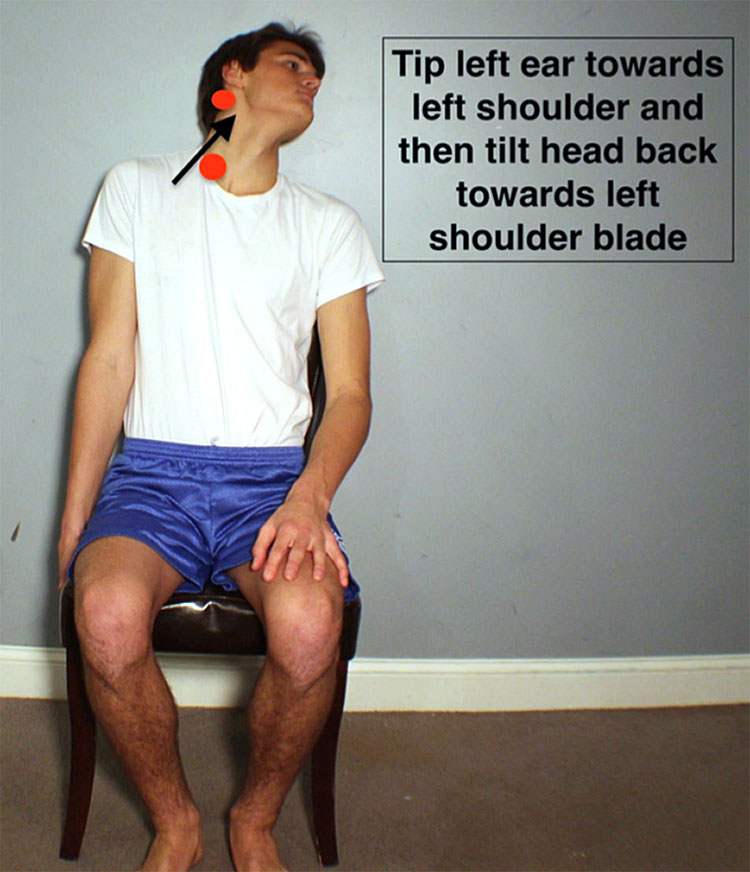General guidelines: To re-educate chronically tight muscles it is imperative that while stretching there is adequate blood flow going to the deep part of the muscle which is generally where the worst part of the strain is. Ideally, THE STRETCH SHOULD BE DONE WITHIN 5 MINUTES AFTER EXERCISE OR ACTIVITY. Even 5-10 minutes of steady activity around the house or office will help warm up the muscle so that you can get the maximum benefit of the stretch to the deep part of the muscle before it has a chance to cool down. This will insure that as the muscle cools down it doesn’t keep returning to the same set point over and over. It is ok to stretch before getting out of bed in the morning. This is a great way to loosen up and get the day started but it is not as effective for re-educating muscles as doing it after activity.
FREQUENCY: THE FIRST 2 WEEKS DO EACH SIDE FOR 10 SECONDS AND THEN REPEAT ONCE.
It’s important to get your body used to the feeling of the stretches and to get into the habit of doing it daily. As you get more comfortable with it, I would encourage you to stretch it longer (up to 30 seconds) if you have the time and/or it feels helpful. Most people won’t stretch indefinitely twice daily so after two weeks going to once daily is common.
Directions: Sit up straight and anchor your right arm down by holding onto the chair with the right arm. The picture describes what to do but the key is DON’T CRANK IT BACKWARDS as this is another sensitive area that can get sore with a stretch that is too aggressive especially when first starting out. Use breathing to get more relaxation in the neck and gently let it go back towards the shoulder blade during exhalation. For people with tingling in their arms/hands when they wake up at night this is a good stretch.

